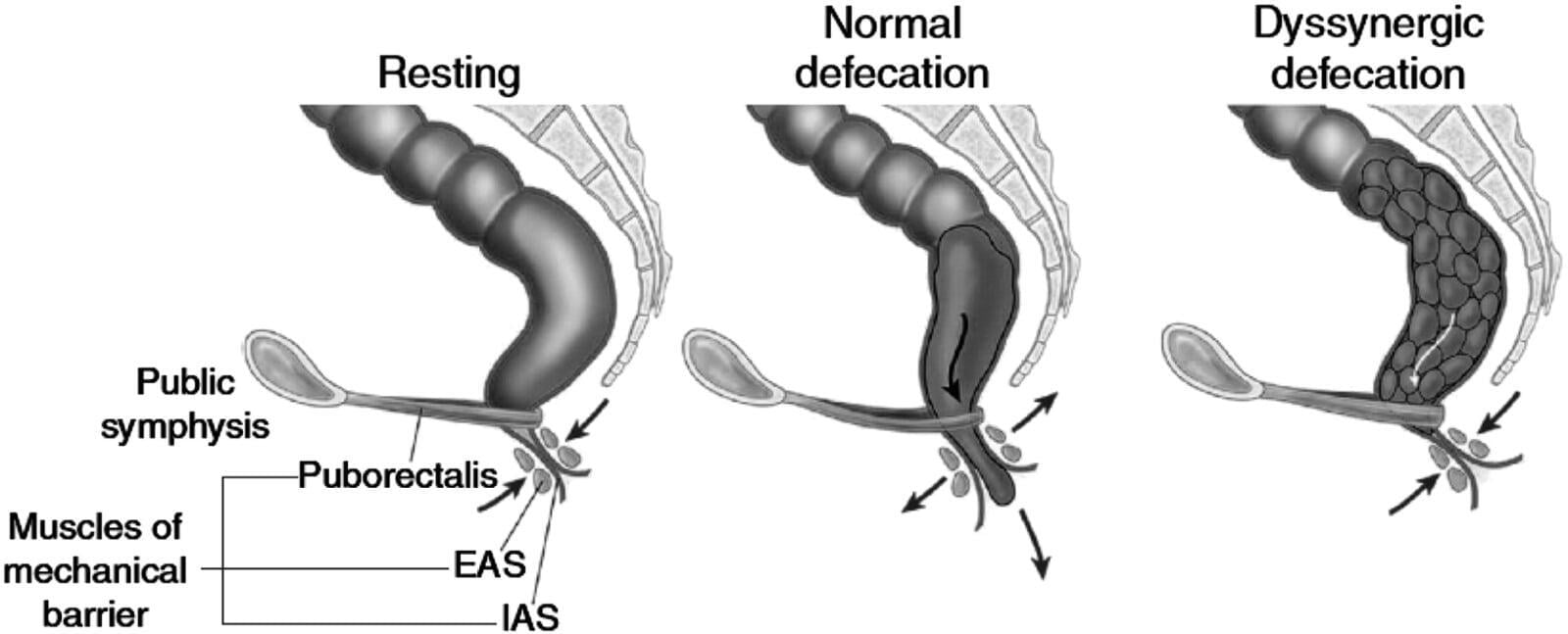The muscles might be behind your symptoms.

Constipation can be one of most frustrating experiences and for some it’s on a daily basis. There may be several causes of constipation that are could be due to digestion, slow transit, IBS, but the muscles could be playing a part as well. If all things digestion have been checked out and tests have come back negative, it’s time to check out the pelvic floor. To know what might be happening in chronic constipation, first let’s check out what the muscles usually do with bowel movements (in those without issues). We know there are muscles that are under voluntary and involuntary control
Basically, certain muscles help move the stool down and then the external anal sphincter (EAS, what we think of as the anal opening, that is puckered) is supposed to relax for everything to come out. This is done with the coordination of the abdominal muscles as they bear down gently. The PR (puborectalis) is also supposed to relax - this muscle is a part of the pelvic floor.
Those with chronic constipation may be able to relax and contract muscles outside of when they want to have a bowel movement but the coordination of all of them working together is off when they need it. With bearing down, usually a tightening of the EAS is seen versus relaxation. This leads to the person feeling that they need to push and strain excessively.
Excessive straining may consistently be a risk factor for things like pelvic organ prolapse and the continuation of a never ending cycle of straining. Behaviours can be learnt and retrained and in this case some muscular training would be required to help reduce constipation and straining.
Pelvic Floor Physiotherapy can help you regain control and ease of movement with your bowels. Part II will identify tips and tricks to use for chronic constipation.
Questions? Comment below, e-mail us at hello@kaaiaa.co or book a free phone consult.


